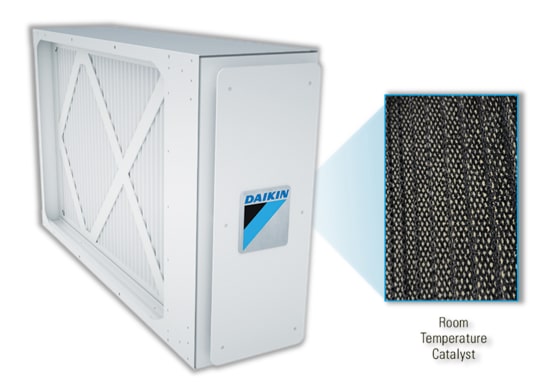Whole House Air Purification System Cost

A whole house air purification system is a fantastic investment for improving indoor air quality. However, just like any appliance, it can sometimes experience issues. This guide provides a step-by-step approach to troubleshooting common problems, helping you determine if it's a simple fix or requires professional assistance. We'll focus on practical, safe checks you can perform yourself.
Understanding Common Issues
Before diving into troubleshooting, let's identify common problems that can affect your whole house air purifier:
- Reduced Airflow: The system seems to be running, but you're not feeling as much air movement through your vents.
- Unusual Noises: Grinding, rattling, or squealing sounds coming from the unit.
- No Power: The system doesn't turn on at all.
- Filter Replacement Indicator: The indicator light remains on even after replacing the filter.
- Ineffective Air Purification: You're still experiencing allergy symptoms or noticing unpleasant odors despite the air purifier running.
Safety First!
Before you start any troubleshooting, always disconnect the power to your air purification system. This prevents the risk of electric shock. Locate the circuit breaker or disconnect switch associated with the system and turn it off. If you're unsure which breaker controls the system, consult your electrical panel directory or a qualified electrician.
Step-by-Step Troubleshooting Guide
1. Power Supply Check
The first step is to ensure the system is receiving power.
- Check the Circuit Breaker: Go to your electrical panel and confirm that the circuit breaker for the air purifier is in the "ON" position. If it's tripped (in the "OFF" or middle position), reset it by flipping it fully to the "OFF" position and then back to "ON".
- Inspect the Disconnect Switch (If Applicable): Some systems have a separate disconnect switch near the unit. Make sure it's in the "ON" position.
- Verify Voltage: Use a multimeter to check the voltage at the unit. (This step is best left to a qualified electrician if you're not comfortable working with electricity.) A qualified electrician can safely measure the voltage to ensure it meets the system's requirements.
When to Call a Pro: If the circuit breaker continues to trip repeatedly after resetting it, there may be a short circuit in the system. This requires the expertise of a qualified electrician to diagnose and repair.
2. Filter Inspection and Replacement
A clogged filter is the most common cause of reduced airflow and decreased effectiveness.
- Locate the Filter: Consult your owner's manual to find the filter location. It's usually behind a removable panel.
- Inspect the Filter: Remove the filter and examine it closely. Is it visibly dirty, clogged with dust, or covered in debris?
- Replace the Filter: If the filter is dirty, replace it with a new filter of the correct size and type. Refer to your owner's manual for the recommended filter specifications.
- Reset the Filter Replacement Indicator: After replacing the filter, reset the filter replacement indicator light. The procedure for resetting the indicator varies depending on the model. Consult your owner's manual for instructions. It often involves pressing and holding a button for a few seconds.
Pro Tip: Set a reminder on your phone or calendar to replace your air purifier's filter regularly. The frequency of filter replacement depends on factors such as air quality, usage, and the type of filter. A good rule of thumb is to replace standard filters every 3-6 months and HEPA filters every 6-12 months.
When to Call a Pro: If the filter replacement indicator light remains on even after replacing the filter and resetting it, there may be a sensor malfunction. This requires professional diagnosis and repair.
3. Airflow Obstructions
Even with a clean filter, airflow can be restricted by obstructions in the ductwork or vents.
- Check Vents: Ensure that all supply and return vents are open and unobstructed by furniture, curtains, or other objects.
- Inspect Ductwork (Visually): Visually inspect accessible sections of the ductwork for any obvious damage, such as crushed or disconnected sections. Do not attempt to access ductwork in confined spaces without proper safety equipment and training.
- Clean Vent Covers: Remove vent covers and clean them to remove any accumulated dust or debris.
When to Call a Pro: If you suspect a major obstruction within the ductwork, or if you find damaged or disconnected ductwork that is not easily accessible, contact a professional HVAC technician for inspection and repair. They have the tools and expertise to safely access and repair ductwork in difficult-to-reach areas.
4. System Settings and Controls
Sometimes, the issue isn't a mechanical problem, but rather an incorrect setting.
- Review the Owner's Manual: Consult your owner's manual to understand the various settings and modes of operation.
- Check Fan Speed: Make sure the fan speed is set appropriately. A low fan speed may result in reduced airflow.
- Verify Timer Settings: If your system has a timer, ensure that it's not set to turn the system off prematurely.
- Inspect Control Panel: Check the control panel for any error codes or warning messages. Refer to your owner's manual to interpret these codes and troubleshoot accordingly.
Pro Tip: Many modern air purification systems have smart features that allow you to control them remotely via a smartphone app. Make sure the app is properly configured and connected to your system.
5. Unusual Noises
Unusual noises can indicate a variety of problems, ranging from loose components to motor issues.
- Identify the Source of the Noise: Try to pinpoint the exact location of the noise. Is it coming from the fan motor, the blower assembly, or somewhere else?
- Check for Loose Components: With the system powered off, carefully inspect the unit for any loose screws, panels, or other components that could be rattling or vibrating. Tighten any loose fasteners.
- Inspect the Fan Blades: With the system powered off, manually rotate the fan blades. Do they spin freely, or do you feel any resistance? Are any of the blades damaged or bent?
When to Call a Pro: If you hear grinding, squealing, or other unusual noises coming from the fan motor or blower assembly, it likely indicates a failing motor or bearing. These components require specialized tools and expertise to repair or replace and should be handled by a qualified HVAC technician.
6. UV Lamp Inspection (If Applicable)
Some whole house air purification systems use UV lamps to kill bacteria and viruses. If your system has a UV lamp, it's important to check its condition.
- Locate the UV Lamp: Consult your owner's manual to find the UV lamp location.
- Inspect the UV Lamp: With the system powered off and following the manufacturer's instructions, carefully inspect the UV lamp. Is it glowing with a bluish-purple light? If the lamp is dim, flickering, or not lit at all, it may need to be replaced.
- Replace the UV Lamp: If the UV lamp needs to be replaced, purchase a new lamp of the correct type and size. Follow the manufacturer's instructions for replacing the lamp. Always wear gloves and eye protection when handling UV lamps, as they contain mercury.
- Dispose of the Old UV Lamp Properly: UV lamps contain mercury and must be disposed of properly. Do not throw them in the trash. Contact your local waste management agency for information on how to recycle or dispose of UV lamps safely.
When to Call a Pro: If you're not comfortable handling UV lamps or if you suspect a problem with the UV lamp power supply, contact a qualified HVAC technician for assistance.
When to Call a Professional
While this guide provides steps for basic troubleshooting, some repairs are best left to the professionals. Always call a qualified HVAC technician if:
- You are uncomfortable working with electricity or gas.
- You suspect a major problem with the system's motor, blower assembly, or other complex components.
- You are unable to diagnose the problem after following these troubleshooting steps.
- The system is still under warranty. Attempting repairs yourself may void the warranty.
- The repair requires specialized tools or expertise.
Remember, your safety is paramount. When in doubt, always err on the side of caution and contact a qualified professional.
Preventive Maintenance
Regular preventive maintenance can help to keep your whole house air purification system running smoothly and efficiently, and can prevent many of the problems discussed above.
- Regular Filter Replacement: As mentioned earlier, replace the filter regularly according to the manufacturer's recommendations.
- Clean the System Regularly: Vacuum or wipe down the exterior of the unit to remove dust and debris.
- Schedule Professional Maintenance: Consider scheduling professional maintenance with an HVAC technician at least once a year. A technician can inspect the system, clean the components, and identify any potential problems before they become major issues.
By following these troubleshooting steps and performing regular preventive maintenance, you can help to keep your whole house air purification system running smoothly and efficiently for years to come, ensuring that you and your family enjoy clean, healthy indoor air.










